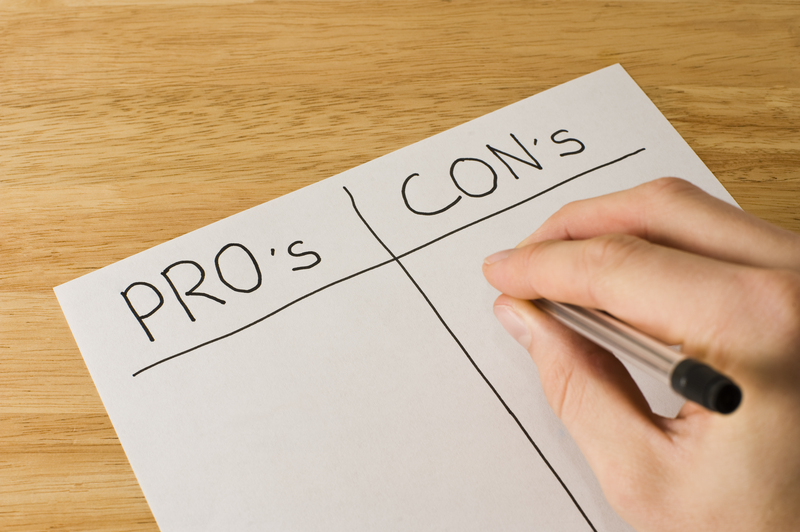Reliable Tips for Moving Your Bed and Mattress
Posted on 19/06/2025
Reliable Tips for Moving Your Bed and Mattress
Moving is a challenging process, and transporting your bed and mattress can easily become one of the most stressful tasks. Ensuring your sleeping setup arrives undamaged and ready for use at your new home is crucial for a comfortable transition. Below, you'll discover reliable tips for moving your bed and mattress--a comprehensive guide packed with actionable advice, expert strategies, and answers to frequently asked questions.

Why Careful Bed and Mattress Moving Matters
When it comes to relocation, people often underestimate the complexities of moving a bed frame and mattress. Damaged frames, stained or ripped mattresses, and incomplete hardware can turn your first night in a new house into a disaster. By following expert mattress and bed transport tips, you'll protect your investment, ensure a hygienic sleep, and reduce unnecessary headaches on move day.
Preparation: The Key to a Smooth Move
Assess Your Bed and Mattress
Before you even start packing, inspect your bed and mattress. Consider the following:
- How large is your mattress (Twin, Full, Queen, King, California King)?
- What type of bed frame do you have (platform, slatted, adjustable, box spring)?
- Will your new home's doors, stairs, and hallways accommodate the size?
- Is your mattress still in good condition, or is it time for an upgrade?
*If your mattress is more than 7-10 years old, moving may be a good time to replace it instead of relocating it.*
Gather the Right Supplies
To ensure a seamless process, compile these essential moving supplies:
- Mattress bag or cover: Protects against dirt, moisture, and tears.
- Moving blankets or pads: Cushions the bed frame during transit.
- Bungee cords or straps: Keeps bed components secure.
- Tools: Such as a screwdriver, Allen wrench, or pliers (specific to your bed's assembly).
- Plastic bags and tape: For hardware like screws and bolts.
- Furniture dolly: Eases the lifting and transport, especially for heavy frames.
- Labels and marker: For organizing pieces and avoiding confusion later.
Measure Your Spaces
- Measure your bed and mattress dimensions carefully.
- Check the width of doorways, stairwells, and elevators in both your current and new homes.
- Plan the moving route in advance to avoid getting stuck or damaging your furniture/walls.
How to Disassemble a Bed Frame Properly
Disassembling the bed frame is essential for both safety and ease. Follow these reliable bed disassembly tips:
- Strip Bedding: Remove all sheets, pillowcases, and bedding. Wash and pack them separately for convenience.
- Remove the Mattress: Encase it in a mattress moving bag (readily available at moving companies or online). Seal the ends for complete protection.
- Take Photos: Use your smartphone to capture how the bed is assembled. This can serve as a visual guide for reassembly at your new home.
- Disassemble with Care: Remove slats, detach the headboard and footboard, and unscrew any bolts or fasteners. Keep all small pieces together in a labeled plastic bag.
- Bundle and Pad: Wrap bed frame parts in moving blankets or bubble wrap to prevent scratches and dings.
- Label Everything: Write details on tags or tape so it's clear what each piece is.
Safeguarding the Mattress: Proven Protection Techniques
Mattresses are both expensive and easily damaged. Ensuring proper protection is critical:
- Always use a mattress bag: These are inexpensive yet extremely effective. They guard against dust, bugs, moisture, and punctures during the move.
- Double-bag for extra safety: If moving during inclement weather, an additional layer helps guard against water damage.
- Never tie the mattress with ropes alone: Tight ropes can deform the mattress or leave imprints. Instead, secure it flat in the moving truck or upright with gentle straps.
- Do not fold memory foam or innerspring mattresses: Folding can damage the delicate structure inside and void warranties.
Moving the Bed and Mattress: Best Practices
Transporting the Mattress
Mattresses are awkward to maneuver due to their size, flexibility, and weight. Here are reliable mattress moving techniques:
- Use two people: This prevents injury and mattress bending.
- Move in an upright position: Carrying it on its side gives better control, especially on stairs.
- Avoid dragging: Dragging can tear the covering--even with a bag on.
- Utilize a furniture dolly for long distances or heavy models.
- Secure in the moving truck: Place it flat when possible, or upright against the side of the van.
Loading and Unloading the Bed Frame
- Pad sharp corners: Prevents scratches to both the furniture and your home's interior.
- Group pieces by type: Keep slats together, side rails with side rails, etc.
- Load last, unload first: This makes the bed setup a priority at your new home, ensuring you have a place to sleep after a long day.
DIY vs. Professional Movers: What's Best for Bed and Mattress Moving?
Should you move your bed and mattress yourself, or hire professionals? The answer depends on:
- Distance: Local moves are easier to DIY. For long-distance or interstate moves, pros often have better equipment and experience handling delicate items.
- Time constraints: If you're in a hurry, professional movers save hours of work.
- Complexity: Bulky, heavy, or customized beds are riskier to move without trained help.
- Budget: DIY saves money but may increase the risk of damage if you're not careful.
Tip: If hiring movers, ask if they provide specialty mattress bags and furniture padding. Confirm whether assembly and disassembly are included.
Special Situations: Moving Adjustable Beds, Bunk Beds, and Frames with Storage
Not all beds are created equal. Here's how to safely move the trickiest bed types:
- Adjustable beds: Unplug the power source first. Remove motors/controllers and transport them separately, well-padded and labeled. Disassemble base if possible.
- Bunk beds: Disassemble fully--moving them assembled risks both safety and damage. Keep ladders and guardrails with their hardware.
- Beds with storage: Empty drawers before moving. Secure moving parts with tape or shrink wrap to prevent shifting or breakage.
Unpacking and Assembling Your Bed and Mattress at the New Home
Reassembly Checklist
- Clean and vacuum the new room before bringing in the mattress.
- Lay out all bed frame parts, referring to your pre-move photos for guidance.
- Assemble the frame fully before placing the mattress on top. Ensure all screws and bolts are tight.
- Unpack the mattress just before bed to allow it to air out from the moving bag.
- Double-check for missing hardware or issues. If something is lost, many beds have replacement parts available online.
Mattress Care After Moving
Transport can temporarily alter the shape and comfort of a mattress. For optimal results:
- Allow the mattress to lay flat and "rest" for a few hours before making the bed.
- Air it out to dissipate any odors from plastic wrapping or moving truck fumes.
- Check for visible damage before using--report any problems to your moving insurance or company.
Frequently Asked Questions about Moving Beds and Mattresses
Can I move a mattress on top of my car?
While some people attempt this with short moves, it is not recommended. Most vehicles lack the proper anchor points, risking damage to the mattress and posing safety hazards. If you must, secure the mattress flat (never folded) with strong straps, drive slowly, and avoid highways. Renting a van is safer and more effective.
Is it okay to fold or bend a mattress during moving?
Foam-only mattresses (like memory foam) can sometimes be gently bent for short periods, but innerspring or hybrid mattresses should never be folded, as doing so can damage the core structure.
How should I clean my mattress after a move?
Vacuum the surface and, if needed, use a lightly damp cloth with mild detergent. Let it air out fully before placing bedding on it.
What's the safest way to carry a heavy bed frame?
Use a furniture dolly for heavy pieces. Always lift with your knees (not your back) and work with a partner to prevent injury or dropping the frame.

Pro Tips for Stress-free Bed and Mattress Relocation
- Pack bedding and hardware separately in clearly marked boxes for immediate access at your new place.
- Schedule your move for dry weather if possible.
- Check with your moving company about insurance coverage for furniture and mattresses.
- For long-term storage, never leave a mattress compressed or folded; always store it flat in a climate-controlled space.
- If you foresee difficulty, consider hiring professionals experienced with moving beds and mattresses for peace of mind.
Conclusion: Move Your Bed and Mattress with Confidence
The process of moving your bed and mattress doesn't need to be daunting. With these reliable tips for moving your bed and mattress, you're equipped to handle the job efficiently, safely, and with minimal stress. Remember: Careful preparation, proper supplies, and a systematic approach will guarantee that your sleep setup survives the move and is ready to provide comfort on your very first night in your new home. Sweet dreams--and happy moving!



